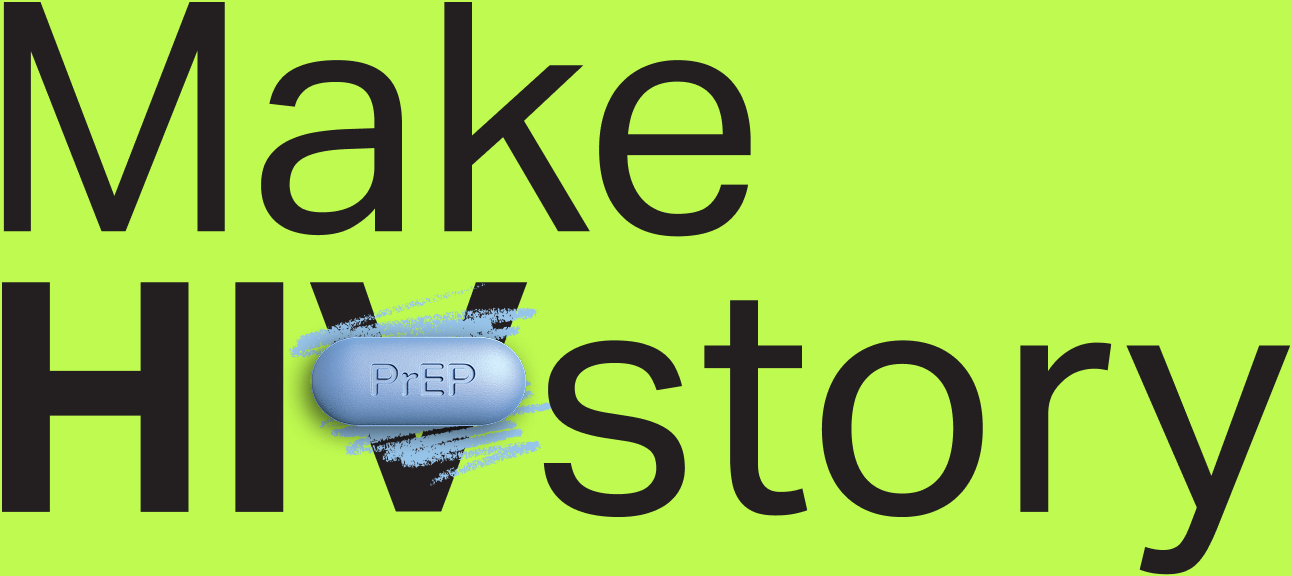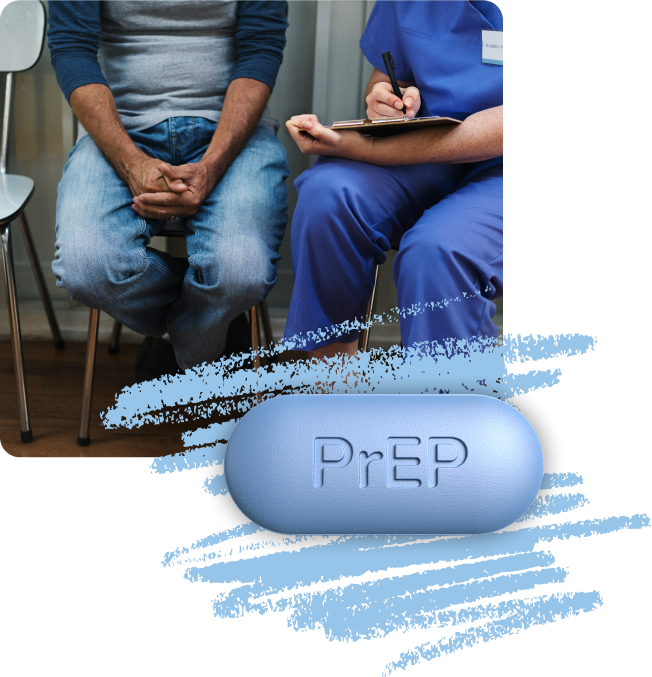
Join the mission to end transmission.
Learn how easy it is to prescribe PrEP today.
Start the
conversation.
PrEP reduced the incidence of HIV by 92% over 3 years vs the historically expected incidence1
Prescribe with
confidence.
PrEP can be prescribed in four simple steps in one consultation by General Practitioners and Nurse Practitioners
Make
history.
End HIV transmission by 2030
You can help end HIV transmission in Australia
PrEP is one of the most effective HIV prevention tools we’ve ever had.
With your help, we can reach Australia’s goal of virtual elimination of HIV transmission by 2030.
Prescribing PrEP to prevent HIV is simple
General Practitioners and Nurse Practitioners can prescribe without specialist training
PrEP can be raised during everyday consults, where appropriate
A quick, confident conversation is all it takes to get started
What is PrEP?
Pre-Exposure Prophylaxis, or PrEP, is a highly effective antiretroviral medication used to prevent HIV transmission that can be taken once daily or on demand.
Internationally, PrEP is also available as an injectable or vaginal ring.
Up to 99% reduction in HIV infection risk when taken as prescribed
Available on the PBS
for eligible patients
Suitable for
prescription in primary care
Can be taken
once daily, or on demand for suitable patients

Who is PrEP for?
PrEP should be considered for anyone at risk of HIV.
While anyone who asks for PrEP should be considered, it is recommended for specific groups of people who have been identified as priorities, based on epidemiological evidence.
People to consider starting a conversation about PrEP with could include:
- Gay, bisexual and men who have sex with men (MSM)
- Trans and gender diverse people
- Heterosexual people who have sex with people that may be at higher risk of HIV
It is important to consider behaviours that increase the risk of HIV and not just how they identify. People who may benefit from PrEP also include:
- Men who have sex with men but identify as heterosexual
- People who have receptive intercourse without a condom with a person living with HIV who is not on treatment and/or has a detectable viral load
- People who have receptive anal intercourse without a condom with any casual male or trans female partner
- Men who have sex with men, trans or gender diverse people who have been diagnosed with an STI recently
- People who share injecting equipment
Confirm your patients’ behavioural and clinical suitability for PrEP with this tool.
When should I bring PrEP up?
One question can change a life: “Have you heard of PrEP?”
There may never be a perfect time to discuss PrEP with your patients. Some patients may not be aware of PrEP or their HIV risk, while others may not come into contact with health services often. Any opportunity to discuss PrEP should be taken. Consider raising PrEP during your consultations, including:
- STI test requests
- Contraceptive consultations
- Young people who might be becoming sexually active
- New or multiple partners
- Travel to high-prevalence countries
- Previous HIV Post-Exposure Prophylaxis (PEP) use
- Expressed anxiety about HIV or other STIs
Advice on sexual history taking can be found here.
What should I do if a patient brings PrEP up?
Someone asking about PrEP is an opportunity to explore why they believe they may be at risk, assess their suitability and prescribe PrEP.
For detailed suitability criteria and clinical guidance, refer to the National PrEP Guidelines.
How do I prescribe PrEP?
After confirming a patient is suitable for PrEP, complete the following steps in the same visit:
Step 1: Confirm HIV-negative status (rapid or lab-based test)
Step 2: Screen for STIs, renal function
Note: this should not delay initiation of PrEP
Step 3: Discuss daily or on-demand dosing schedule, see details here
Note: see information on suitability for on-demand PrEP here
Step 4: Prescribe on PBS + set review and testing schedule
Full details of how to prescribe PrEP are available here.
Want to dive deeper?
Explore these evidence-based education tools developed by ASHM:
Join the mission to end transmission and make HIV history.
Start prescribing PrEP today.
Upcoming Conferences and Events
Programs
Prescribers
Contact Us
ASHM Head Office - Sydney
Level 3, 160 Clarence Street Sydney, NSW 2000
Tel: (+61) 02 8204 0700
Acknowledgement of Country
ASHM acknowledges the Traditional Owners of Country across the various lands on which we live and work. We recognise Aboriginal and Torres Strait Islander peoples’ continuing connection to land, water, and community and we pay our respects to Elders past and present. ASHM acknowledges Sovereignty in this country has never been ceded. It always was, and always will be, Aboriginal land.
The information provided on this website and its related websites and guidelines, and the resources made available by ASHM in any format or medium, are for general information purposes only and are not intended as medical advice or as a substitute for consultation with a qualified healthcare professional. While ASHM Health strives to provide accurate and current resources and information, the resources, information and guidelines made available by ASHM Health do not provide personalised medical advice, diagnosis, or treatment. Healthcare professionals should apply their clinical judgment and consider individual circumstances when using this information. To the extent permitted by law, ASHM Health disclaims all liability for any outcomes resulting from reliance on the information provided. For specific medical concerns, please consult a licensed healthcare provider.
Reference: 1. Grulich AE et al. Lancet HIV 2021;8(8):e486–94.
ASHM Health | ABN 48 264 545 457 | CFN 17788 | Copyright © 2024 ASHM
